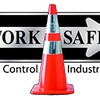
Worksafe has been providing smart solutions throughout New England for over ten years now. We offer sales and or rental options. Call the experts today for a consultation to discuss your project needs and goals. We offer the full package from the design phase to implementation, deployment as well as short- or long-term 24/7 maintenance services.
We also offer equipment repair as well. We have a very large fleet of message signs, arrow boards, traffic signals, trailer mounted video cameras, queue detection, speed signs, and microwave technologies we offer for rent. We specialize in smart work zone and real-time traffic solutions.
We also offer equipment repair as well. We have a very large fleet of message signs, arrow boards, traffic signals, trailer mounted video cameras, queue detection, speed signs, and microwave technologies we offer for rent. We specialize in smart work zone and real-time traffic solutions.
Services
Built an 8,000-square foot manufacturing facility and offices. The new facility included silk screening equipment, automated equipment for sheeting application, and a full PC system that runs on Flexi-Sign Pro. The PC was designed for highway use but was designed to also be used for commercial/custom signs.
The need for standard highway signs to manage traffic was recognized very soon after the introduction of the automobile itself, and by the late 1920s, committees had been formed which were tasked with developing uniform standard highway signs, to eliminate traffic confusion and to maintain an orderly flow in both urban and rural areas of the country.
Conventional road guide signs are used primarily to provide direction for motorists using highways and streets, as well as to provide information about intersecting routes. These indicators can also be used to direct motorists to towns, villages, and cities, or to other local destinations they may be seeking such as rivers, national parks, wildlife preserves, and historical sites.
Encountered on highways, freeways, and dense city routes, managed lanes allow for restrictions of traffic or variable tolling, in order to further optimize the traffic flow. These signs are often used to indicate high-occupancy vehicle lanes, high-occupancy toll, reversible, express toll, taxi, and bus lanes, as well as for other traffic including light-rail and bicycles.
Toll plazas are generally situated along highways which have limited freeway or expressway access. Some portion of a route or the entire route could be a paid highway, or it might be that there is a discrete section of the route which is subject to the fee, for instance a bridge or tunnel. The signs which are used to identify these roads will vary in accordance with the kind of access provided by the route itself.
Reviews

Be the first to review L & D Safety Marking.
Write a Review

